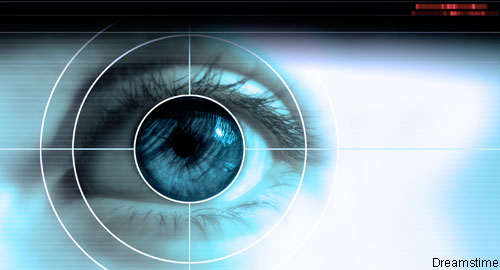 The effects of uveitis are life changing, causing vision damage and even blindness. However, early detection and effective treatment can halt inflammation and protect patients from permanent eye damage and vision loss.
The effects of uveitis are life changing, causing vision damage and even blindness. However, early detection and effective treatment can halt inflammation and protect patients from permanent eye damage and vision loss.
This form of inflammation affects the middle layer of the eye wall, known as the uvea, and is a frequent complication of juvenile idiopathic arthritis (JIA). Idiopathic uveitis may also be diagnosed when no arthritis or other identifiable causes are present.
“Uveitis is a complication of JIA about which both pediatric and adult rheumatologists must be aware and refer patients for regular screening eye exams,” says Kathleen O’Neil, MD.
As chief of the division of rheumatology and professor of clinical pediatrics at the Indiana University School of Medicine, Dr. O’Neil sees the importance of detecting all forms of pediatric uveitis early and engaging in close collaboration with a patient’s ophthalmologist to coordinate the best treatment, including systemic immunosuppressive therapies when needed to prevent permanent damage.
She also cautions that uveitis is not only a pediatric concern. “Adult rheumatologists need to be aware of uveitis as a complication of JIA, especially for young adult patients transitioning from pediatric care who may never have had uveitis before, so have stopped routine screening exams. Uveitis can occur for the first time in adulthood.”
To improve uveitis awareness, Dr. O’Neil suggests all rheumatologists have a clear understanding of uveitis risk factors, symptoms and the best treatment options based on long-standing and emerging evidence.
The Risk Factors
Several factors put JIA patients at a higher risk for uveitis. These include the onset of arthritis at an early age, being female and having inflammation of four or fewer joints (i.e., oligoarticular JIA). A positive antinuclear antibody (ANA) test and being African-American or Asian are also risk factors, as well as certain genetic markers (HLA-B27, HLA-DR5 haplotype, HLA-DRB1*1104 allele, and a combination of HLA-DRB1*1104 and HLA-DPB1*0201 alleles).1,2
The Symptoms
The chronic uveitis associated with JIA is usually asymptomatic. In the seronegative spondyloarthropathies, acute uveitis may occur. Common symptoms associated with acute uveitis include eye pain, erythema and photophobia.
“Children with the asymptomatic chronic uveitis may present with vision troubles by putting their face inches from a coloring page they are working on or standing very close to the television. They may also bump into things when they walk and exhibit other signs of visual difficulty,” Dr. O’Neil says. The child with HLA-B27-associated enthesitis-related arthritis (seronegative spondyloarthropathy) may occasionally develop red eye, indicating acute anterior uveitis. These patients are often photophobic. Usually, short-term topical treatment, such as steroid eye drops, controls this form of uveitis.
Adolescent and adult patients are likely to be more verbal in describing eye pain or vision issues than young children, Dr. O’Neil says. However, although these symptoms can help all rheumatologists suspect uveitis, she cautions that the most severe and damaging forms of uveitis are typically asymptomatic.
“This [reason] is why screening is so important, particularly when patients exhibit risk factors,” she says. The most common test to identify uveitis risk in JIA is an ANA test. Dr. O’Neil recommends pediatric patients with JIA be screened with regular slit lamp examinations according to established screening guidelines to stay vigilant for the earliest signs of uveitis.3
Treatment Approaches
The current uveitis treatment options include steroid drops, but often require long-term disease-modifying anti-rheumatic drug (DMARD) therapy, such as methotrexate or other systemic medicines. Monoclonal anti-TNF antibodies, abatacept and tocilizumab in small series have demonstrated efficacy in treating uveitis, Dr. O’Neil says.4,5 She also describes preliminary evidence that the rate of JIA-associated uveitis may be lower for the early treatment of JIA with methotrexate and/or TNF inhibitor.6
Even for patients without JIA, she says ophthalmologists are learning that certain systemic immunosuppressive therapies used to treat rheumatic diseases may be effective for controlling idiopathic uveitis. For patients with inflammatory diseases who present with uveitis, she says research is shedding new light on the best treatments, as well as the psycho-social challenges pediatric patients experience.7,8
Carina Stanton is a freelance science journalist in Denver.
References
- Giannini EH, Malagon CN, Van Kerckhove C, et al. Longitudinal analysis of HLA associated risks for iridocyclitis in juvenile rheumatoid arthritis. J Rheumatol. 1991;18(9):1394–1397.
- Melin-Aldana H, Giannini EH, Taylor J, et al. Human leukocyte antigen-DRB1*1104 in the chronic iridocyclitis of pauciarticular juvenile rheumatoid arthritis. J Pediatr. 1992;121(1):56–60.
- British Society for Paediatric and Adolescent Rheumatology, Royal College of Ophthalmologists. Guidelines for screening for Uveitis in Juvenile idiopathic arthritis. 2006.
- Suhler EB. Abatacept treatment of uveitis (NCT01279954). ClinicalTrials.gov. 2018 Aug.
- Hardwick B. Tocilizumab in anti-TNF refractory patients with JIA associated uveitis (ISRCTN95363507). ISRCTN registry. 2015 Jun.
- Foeldvari I, Becker I, Horneff G. Uveitis events during adalimumab, etanercept, and methotrexate therapy in juvenile idiopathic arthritis: Data from the biologics in pediatric rheumatology registry. Arthritis Care Res (Hoboken). 2015 Nov;67(11):1529–1535.
- Angeles-Han ST, Lo MS, Henderson LA, et al. Childhood Arthritis and Rheumatology Research Alliance consensus treatment plans for juvenile idiopathic arthritis-associated and idiopathic chronic anterior uveitis. Arthritis Care Res. 2018 May 28. doi: 10.1002/acr.23610.
- Parker DM, Angeles-Han ST, Stanton AL, et al. Chronic anterior uveitis in children: Psychosocial challenges for patients and their families. Am J Ophthalmol. 2018 Jul;191:xvi–xxiv.
Learn More
Kathleen O’Neil, MD, co-moderated a discussion on Pediatric Uveitis in the Biologic Age at the 2018 ACR/AHRP Annual Meeting in Chicago.
Learn more about treating patients with JIA in the ACR’s 2013 Update of the 2011 American College of Rheumatology Recommendations for the Treatment of Juvenile Idiopathic Arthritis and stay tuned for publication of a new update anticipated in 2018.


